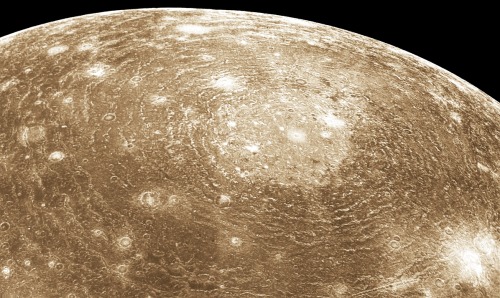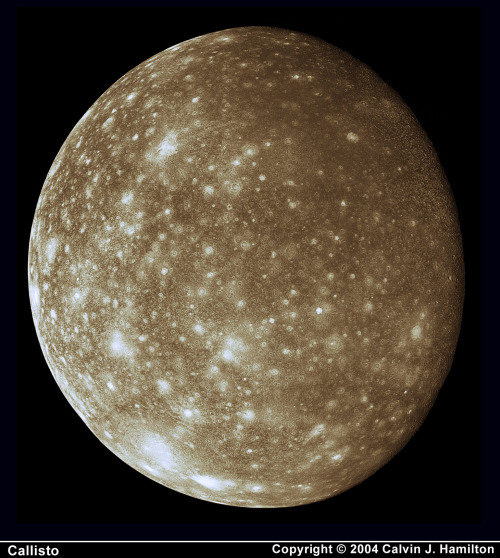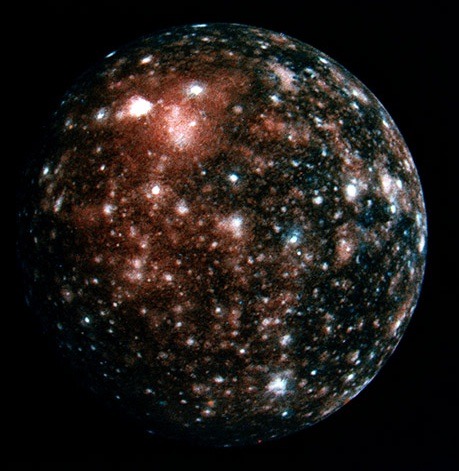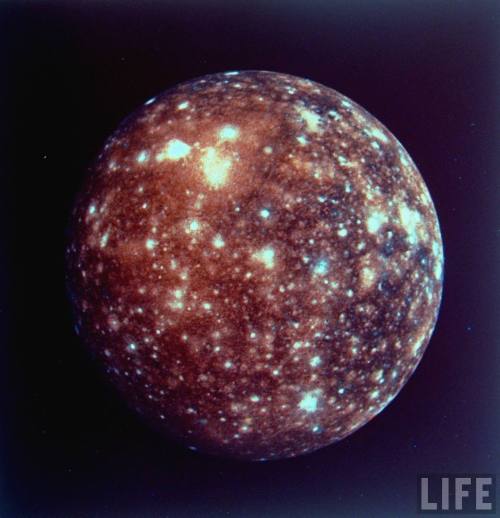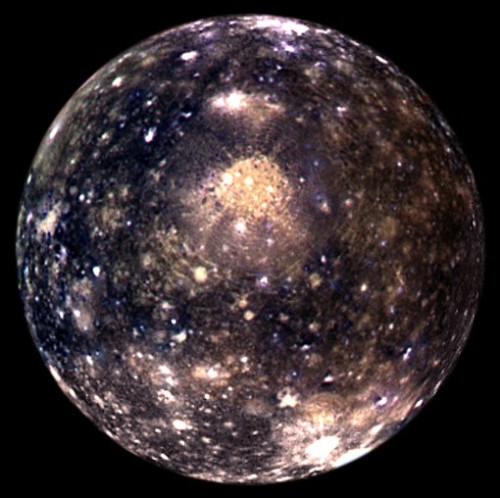July 16th, 1969, 8:32 AM - Neil Armstrong, Michael Collins, And Edwin “Buzz” Aldrin Jr. Lift Off

July 16th, 1969, 8:32 AM - Neil Armstrong, Michael Collins, and Edwin “Buzz” Aldrin Jr. lift off aboard Saturn V SA-506.
More Posts from Fillthevoid-with-space and Others

I’ve been dropping the word ‘spectroscopy’ with only minimal explanation for quite a few episodes now and it’s high time I expanded on this topic. Join me for the double-digit episode of this podcast to learn about the history of spectroscopes and spectroscopy, how it taught us about the Sun and stars, and what advancements were made to take spectroscopes into the 20th century.
Below the cut are sources, music credits, a vocabulary list, a timeline of all the astronomers and chemist and physicists I mention, and the transcript of this episode. Let me know what you think I should research next by messaging me here, tweeting at me at @HDandtheVoid, or asking me to my face if you know me in real life. And please check out the podcast on iTunes, rate it or review it if you’d like, subscribe, and maybe tell your friends about it if you think they’d like to listen!
(My thoughts on the next episode were probes through the ages or the transit of Venus. I could also talk about more modern spectroscopy, and I’m planning to interview a friend after the eclipse next week about her graduate-level research into the history of the universe. Let me know by the 17th and I’ll have the next podcast up on August 28th, barring any new-job-related delays.)
Glossary
absorption lines - dark spectral lines that appear in a spectroscope when a gaseous or burned-up element has light shone through it.
angstrom - a unit of length—one hundred-millionth of a centimeter—that is usually used to express wavelengths and the distances in atoms.
emission lines - bright spectral lines that appear in a spectroscope when you burn an element up.
Fraunhofer lines - a standard set of spectral absorption lines observed by Joseph von Fraunhofer. He mapped 574 lines and designated them alphabetically from red to violet in the spectrum with the letters A through K, with weaker lines assigned other, lowercase letters.
incandescent - luminous or glowing due to intense heat.
spectroscopy - the study of light from an incandescent source (or, more recently, electromagnetic radiation and other radiative energy) that has its wavelength dispersed by a prism or other spectroscopic device that can disperse an object’s wavelength. The spectra of distant astronomical objects like the Sun, stars, or nebulae are patterns of absorption lines that correspond to elements that these objects are made up of. This area of study is the major source of the study of astrophysics as well as advancements in chemistry, astronomy, and quantum mechanics.
Script/Transcript
Sources
Prisms vs. diffraction gratings via CSIRO
Definition of ‘angstrom’ via Encyclopedia Brittanica
Definition of ‘incandescent’ via Merriam-Webster
Current uses of spectroscopy in astronomy
Some past and current satellites with spectroscopic capabilities via a John Hopkin’s professor’s old webpage
Spectral classification of stars via University of Nebraska-Lincoln
Common, A. A. “Astronomy.” In Popular Astronomy 8 (1900), 417-24. Located on Google Books preview.
Hirshfeld, Alan. Starlight Detectives. Bellevue Library Press: NY, 2014.
“the Fraunhofer lines, as they were soon to be called, originate in the sun itself, and are neither optical artifacts of the spectroscope nor the result of selective absorption of sunlight within earth’s atmosphere” (168-9).
“the flame’s radiance did not ‘fill in’ the dark D [sodium] lines , as [Kirchhoff] had expected, but reinforced the absorption of these wavelengths of light” (178).
Kirchhoff: “the dark lines of the solar spectrum … exist in the consequence of the presence, in the incandescent atmosphere of the sun, of those substances which in the spectrum of a flame produce bright lines in the same plane” (178).
“a body with a propensity to emit light at a given wavelength must have an equal propensity to absorb light at that wavelength” (178).
“expresses the wavelength of a spectral line, depending on its derivation angle and the density of grooves in the grating” (187).
“mosaic of the solar spectrum assembled from prints of twenty-eight negatives” (187).
“visual confirmation of the chemical unity of the Sun and stars” (203).
Doppler “claimed in 1842 that the perceived frequency of a wave is altered by one’s state of motion” (209).
“In Doppler’s schema, waves from a steadily approaching source are compressed: as their frequency is increased, their wavelength is shortened. Waves from a steadily receding source are stretched: as their frequency is reduced, their wavelength is elongated” (210).
“Yet history has shown that credit for an evolving theory or field, such as stellar spectrum photography, often goes not to individuals who are first to publish, but to those who most convincingly establish the validity and worth of their results” (223).
“Vogel confirmed that the Sun does not rotate as a solid body; Its rotation rate varies with solar latitude, fastest at the equator, progressively slower towards the poles” (231).
“The deviation of the star’s G line from its solar position revealed the star’s Doppler shift and, via a mathematical formula, its line-of-sight motion” (232).
“What Pickering had accomplished for stellar spectral classification with the Henry Draper project, Campbell had accomplished for stellar radial velocities with the Lick catalog” (233).
Johnson, George. Miss Leavitt’s Stars. Atlas Books: NY, 2005.
“When Kirchhoff and Bunsen made the discovery, the existence of atoms was still controversial. Once they were discovered, the effect could be simply understood: when an atom is energized, its electrons jump into higher orbits. When they fall back down they emit various frequencies of light. Every kind of atom is built a little differently, its electrons arrayed in a specific way, resulting in a characteristic pattern. For similar reasons, if you shine a light through a gaseous substance, like hydrogen or helium, certain colors will be filtered out. The result in this case is a characteristic pattern of black ‘absorption’ lines interrupting the spectrum—another unique chemical fingerprint. (The same colors marked by the absorption lines would appear as bright emission lines if the element was burned.)” (102-103).
Rhodes, Richard. The Making of the Atomic Bomb. 2nd ed. Simon & Schuster: NY, 2012.
Timeline
William Herschel, German/English (1738-1822)
Thomas Melvill, American (1751-1832)
William Hyde Wollaston, English (1766-1828)
David Brewster, Scottish (1781-1868)
Françoise Arago, French (1786-1853)
Joseph von Fraunhofer, Bavarian (1787-1826)
William Henry Fox Talbot, English (1800–1877)
George Airy, English (1801-1892)
Christian Doppler, Austrian (1803-1853)
Robert Wilhelm Bunsen, German (1811-1899)
Anders Ångström, Swedish (1814-1874)
Lewis Morris Rutherfurd, American (1816-1892)
William Allen Miller, English (1817-1870)
Pietro Angelo Secchi, Italian (1818-1878)
Armand-Hippolyte-Louis Fizeau, French (1819-1896)
William Huggins, English (1824-1910)
Gustav Kirchhoff, German (1824-1887)
Giovanni Battista Donati, Italian (1826-1873)
James Clerk Maxwell, Scottish (1831-1879)
Henry Draper, American (1837–1882)
Mary Anna Palmer Draper, American (1839–1914)
Hermann Carl Vogel, German (1841-1907)
Edward Charles Pickering, American (1846–1919)
Margaret Lindsay Huggins, Irish/English (1848-1915)
Henry Augustus Rowland, American (1848-1901)
Williamina “Mina” Fleming, Scottish (1857–1911)
William Wallace Campbell, American (1862-1938)
Annie Jump Cannon, American (1863-1941)
Antonia Maury, American (1866-1952)
Vesto Melvin Slipher, American (1875-1969)
Edwin Hubble, American (1889-1953)
Intro Music: ‘Better Times Will Come’ by No Luck Club off their album Prosperity
Outro Music: ‘Fields of Russia’ by Mutefish off their album On Draught
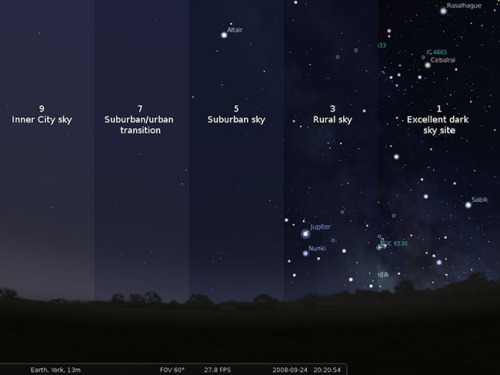
People think they know darkness, and that they experience darkness everyday, but they don’t, really.
Across the United States, natural darkness is an endangered resource. East of the Mississippi, it is already extinct; even in the West, night sky connoisseurs admit that it’s quicker to find true darkness by flying to Alice Springs, Australia, than traveling to anywhere in the lower forty-eight.
Ever since the nation’s first electric streetlight made its debut in Cleveland, on April 29, 1879, the American night has become steadily brighter. In his new book, The End of Night: Searching for Natural Darkness in an Age of Artificial Light, Paul Bogard aims to draw attention to the naturally dark night as a landscape in its own right — a separate, incredibly valuable environmental condition that we overlook and destroy at our own peril.
Read More.

TELLURIAN
[adjective]
1. of or characteristic of the earth or its inhabitants; terrestrial.
[noun]
2. an inhabitant of the earth.
3. Tellurion: an apparatus for showing the manner in which the diurnal rotation and annual revolution of the earth and the obliquity of its axis produce the alternation of day and night and the changes of the seasons.
Etymology: from Latin tellūs, “the earth” + -ian, "of, relating to, or resembling".
[Frank Moth - We Used To Live There]
pretty space words
aphelion - the point in the orbit of a planet, asteroid, or comet at which it is farthest from the Sun. astral - relating to or resembling the stars. caldera - a large volcanic crater, especially one formed by a major eruption leading to the collapse of the mouth of the volcano. celestial - positioned in or relating to the sky, or outer space as observed in astronomy. constellation - a group of stars forming a recognizable pattern. cosmos - the universe seen as a well-ordered whole. equinox - the time or date at which the sun crosses the celestial equator, when day and night are of equal length. faculae - bright patches that are visible on the Sun’s surface. lunation - the interval of a complete lunar cycle, between one new Moon and the next. interstellar - occurring or situated between stars. nebula - a cloud of gas and dust in outer space, visible in the night sky either as an indistinct bright patch or as a dark silhouette against other luminous matter. perihelion - the point in the orbit of a planet, asteroid, or comet at which it is closest to the Sun. synodic - relating to or involving the conjunction of stars, planets, or other celestial objects.
Comet That Took a Century to Confirm Passes by Earth
NASA Goddard Space Flight Center logo. March 31, 2017 On April 1, 2017, comet 41P will pass closer than it normally does to Earth, giving observers with binoculars or a telescope a special viewing opportunity. Comet hunters in the Northern Hemisphere should look for it near the constellations Draco and Ursa Major, which the Big Dipper is part of. Whether a comet will put on a good show for observers is notoriously difficult to predict, but 41P has a history of outbursts, and put on quite a display in 1973. If the comet experiences similar outbursts this time, there’s a chance it could become bright enough to see with the naked eye. The comet is expected to reach perihelion, or its closest approach to the sun, on April 12.
Image above: In this image taken March 24, 2017, comet 41P/Tuttle-Giacobini-Kresák is shown moving through a field of faint galaxies in the bowl of the Big Dipper. On April 1, the comet will pass by Earth at a distance of about 13 million miles (0.14 astronomical units), or 55 times the distance from Earth to the moon; that is a much closer approach than usual for this Jupiter-family comet. Image Credits: image copyright Chris Schur, used with permission. Officially named 41P/Tuttle-Giacobini-Kresák to honor its three discoverers, the comet is being playfully called the April Fool’s Day comet on this pass. Discovery credit goes first to Horace Tuttle, who spotted the comet in 1858. According to the Cometography website, 41P was recognized at the time as a periodic comet — one that orbits the sun — but astronomers initially were uncertain how long the comet needed to make the trip. The comet was rediscovered in 1907 by Michael Giacobini but not immediately linked to the object seen in 1858. Later, the astronomer Andrew Crommelin determined that the two observations had been of the same object and predicted that the comet would return in 1928 and 1934, according to the Cometography entry for the comet. However, the object was not seen then and was considered lost. In 1951, L’ubor Kresák discovered it again and tied it to the earlier observations. A member of the Jupiter family of comets, 41P makes a trip around the sun every 5.4 years, coming relatively close to Earth on some of those trips. On this approach, the comet will pass our planet at a distance of about 13 million miles (0.14 astronomical units), or about 55 times the distance from Earth to the moon. This is the comet’s closest approach to Earth in more than 50 years and perhaps more than a century. For scientists, 41P’s visit is an opportunity to fill in details about the comet’s composition, coma and nucleus.
Image above: An artist’s illustration of a group of comet enthusiasts. Image Credits: NASA’s Goddard Space Flight Center. “An important aspect of Jupiter-family comets is that fewer of them have been studied, especially in terms of the composition of ices in their nuclei, compared with comets from the Oort cloud,” said Michael DiSanti of NASA’s Goddard Space Flight Center in Greenbelt, Maryland. He and his team will be observing 41P on April 1 using NASA’s Infrared Telescope Facility in Hawaii. Astronomers will try to determine characteristics such as how quickly 41P’s nucleus rotates, which provides clues about how structurally sound the nucleus is, and whether any changes can be documented in the coma and tail. Observers also will look for outbursts, which are an indication of how active a comet is. By cataloging the subtle, and sometimes not-so-subtle, differences among comets, researchers can construct a family tree and trace the history of how and where these objects formed as the solar system was taking shape. “Comets are remnants from the early solar system,” said DiSanti. “Each comet that comes into the neighborhood of Earth gives us a chance to add to our understanding of the events that led to the formation of our own planet.” Related links: Comets: http://www.nasa.gov/comets Goddard Space Flight Center: https://www.nasa.gov/centers/goddard/home/index.html Images (mentioned), Text, Credits: NASA’s Goddard Space Flight Center, by Elizabeth Zubritsky/Rob Garner. Greetings, Orbiter.ch Full article


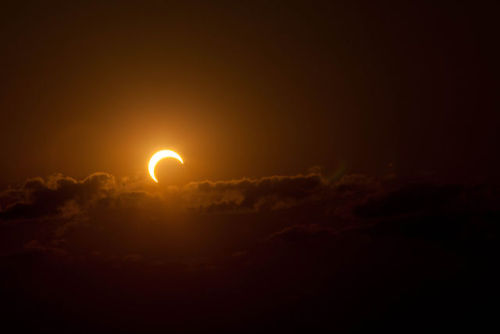

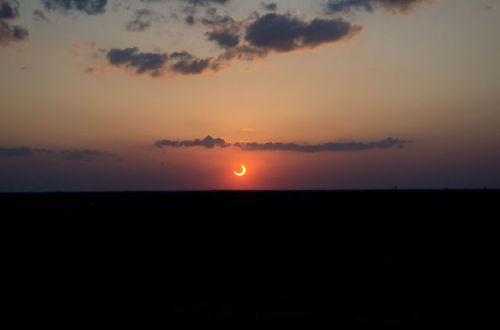


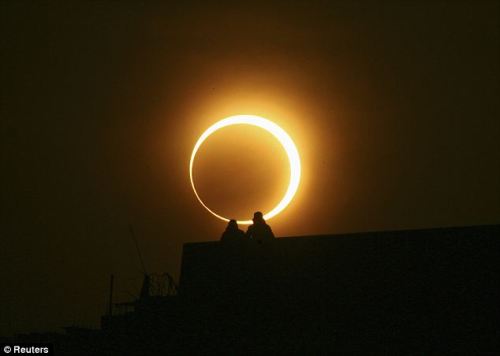
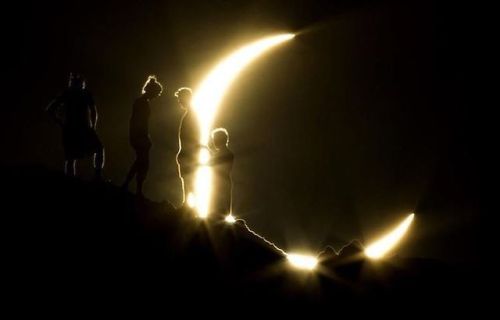
A ‘Ring of Fire’ solar eclipse is a rare phenomenon that occurs when the moon’s orbit is at its apogee: the part of its orbit farthest away from the Earth. Because the moon is so far away, it seems smaller than normal to the human eye. The result is that the moon doesn't entirely block out our view of the sun, but leaves an “annulus,” or ring of sunlight glowing around it. Hence the term “annular” eclipse rather than a “total” eclipse.

UGC 12591: The Fastest Rotating Galaxy Known : Why does this galaxy spin so fast? To start, even identifying which type of galaxy UGC 12591 is difficult – it has dark dust lanes like a spiral galaxy but a large diffuse bulge of stars like a lenticular. Surprisingly observations show that UGC 12591 spins at about 480 km/sec, almost twice as fast as our Milky Way, and the fastest rotation rate yet measured. The mass needed to hold together a galaxy spinning this fast is several times the mass of our Milky Way Galaxy. Progenitor scenarios for UGC 12591 include slow growth by accreting ambient matter, or rapid growth through a recent galaxy collision or collisions – future observations may tell. The light we see today from UGC 12591 left about 400 million years ago, when trees were first developing on Earth. via NASA
js
SpaceX SES-10 Mission successfully Launch
SpaceX - Falcon 9 / SES-10 Mission patch. March 31, 2017
Falcon 9 carrying SES-10 satellite launch
SpaceX took a step into the future Thursday as it reused – for the first time – a recovered first stage of a previously-flown Falcon 9 rocket. Thursday’s mission, carrying the SES-10 communications satellite, lifted off from Pad 39A at Florida’s Kennedy Space Center Thursday 30 March at 18:27 local time (22:27 UTC) and once again landed the booster.
Falcon 9 launch of SES-10
Thursday’s mission made use Falcon 9 the second orbit-capable rocket – after the Space Shuttle – to achieve partial reusability. The Falcon 9 flew from Launch Complex 39A at the Kennedy Space Center, the same pad from which the Shuttle began eighty-two of its missions, including its first and final flights. Reusability has long been a key objective for SpaceX. Making the company’s first launch in March 2006, the small Falcon 1 vehicle carried a parachute system intended to bring its spent first stage back to Earth.
Falcon 9 first stage landed on drone barge
SpaceX’s Falcon 9 rocket deliver SES-10, a commercial communications satellite for SES, to a Geostationary Transfer Orbit (GTO). SES is a world-leading satellite operator, providing reliable and secure satellite communications solutions across the globe.
SES-10 satellite
The SES-10 mission mark a historic milestone on the road to full and rapid reusability as the world’s first reflight of an orbital class rocket. Falcon 9’s first stage for the SES-10 mission previously supported the successful CRS-8 mission in April 2016. For more information about SpaceX, visit: http://www.spacex.com/ Images, Video, Text, Credits: SpaceX/SES. Greetings, Orbiter.ch Full article
-
 stinkyrat09 liked this · 4 years ago
stinkyrat09 liked this · 4 years ago -
 plasticmuse reblogged this · 5 years ago
plasticmuse reblogged this · 5 years ago -
 futuristicgoateekid liked this · 5 years ago
futuristicgoateekid liked this · 5 years ago -
 saturn-v-spacer liked this · 5 years ago
saturn-v-spacer liked this · 5 years ago -
 ashes-acedia liked this · 5 years ago
ashes-acedia liked this · 5 years ago -
 weltons-wife reblogged this · 5 years ago
weltons-wife reblogged this · 5 years ago -
 weltons-wife liked this · 5 years ago
weltons-wife liked this · 5 years ago -
 mrpoohnminnie reblogged this · 5 years ago
mrpoohnminnie reblogged this · 5 years ago -
 rosniel liked this · 5 years ago
rosniel liked this · 5 years ago -
 lebibliotheca reblogged this · 5 years ago
lebibliotheca reblogged this · 5 years ago -
 margieargie liked this · 5 years ago
margieargie liked this · 5 years ago -
 kosmicznacebula reblogged this · 5 years ago
kosmicznacebula reblogged this · 5 years ago -
 tomthanx reblogged this · 5 years ago
tomthanx reblogged this · 5 years ago -
 kt248 reblogged this · 6 years ago
kt248 reblogged this · 6 years ago -
 kt248 liked this · 6 years ago
kt248 liked this · 6 years ago -
 starknightgirl liked this · 6 years ago
starknightgirl liked this · 6 years ago -
 thecolumbiahanger liked this · 6 years ago
thecolumbiahanger liked this · 6 years ago -
 stratobomber75 reblogged this · 6 years ago
stratobomber75 reblogged this · 6 years ago -
 stratobomber75 liked this · 6 years ago
stratobomber75 liked this · 6 years ago -
 existentialverucasalt reblogged this · 6 years ago
existentialverucasalt reblogged this · 6 years ago -
 eeyorenoshippo liked this · 6 years ago
eeyorenoshippo liked this · 6 years ago -
 constantquester liked this · 6 years ago
constantquester liked this · 6 years ago -
 dyskomike reblogged this · 6 years ago
dyskomike reblogged this · 6 years ago -
 dyskomike liked this · 6 years ago
dyskomike liked this · 6 years ago -
 ginger-moose-v2 reblogged this · 6 years ago
ginger-moose-v2 reblogged this · 6 years ago -
 professorelemental reblogged this · 6 years ago
professorelemental reblogged this · 6 years ago -
 professorelemental liked this · 6 years ago
professorelemental liked this · 6 years ago -
 deepinthevineyard liked this · 6 years ago
deepinthevineyard liked this · 6 years ago -
 bennyboy1223 liked this · 7 years ago
bennyboy1223 liked this · 7 years ago -
 outfothisworld liked this · 7 years ago
outfothisworld liked this · 7 years ago -
 aaliyahesb-blog liked this · 7 years ago
aaliyahesb-blog liked this · 7 years ago -
 bikerdude51 liked this · 7 years ago
bikerdude51 liked this · 7 years ago -
 vinnylaskinny liked this · 7 years ago
vinnylaskinny liked this · 7 years ago -
 naturallyaspirated liked this · 7 years ago
naturallyaspirated liked this · 7 years ago -
 fvtsshuttle reblogged this · 7 years ago
fvtsshuttle reblogged this · 7 years ago -
 chasingapollo11-blog reblogged this · 7 years ago
chasingapollo11-blog reblogged this · 7 years ago -
 xd-1691-blog liked this · 7 years ago
xd-1691-blog liked this · 7 years ago
A podcast project to fill the space in my heart and my time that used to be filled with academic research. In 2018, that space gets filled with... MORE SPACE! Cheerfully researched, painstakingly edited, informal as hell, definitely worth everyone's time.
243 posts
